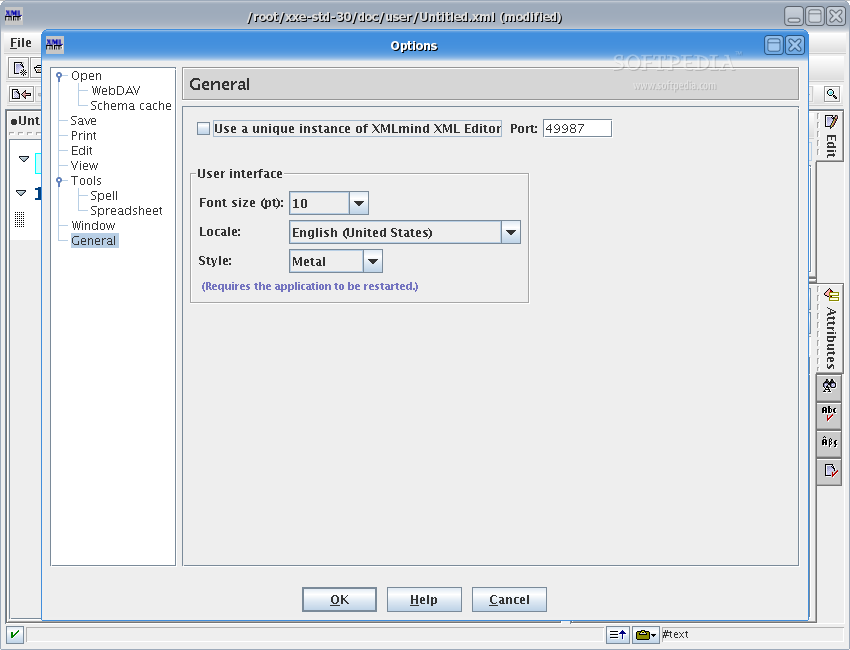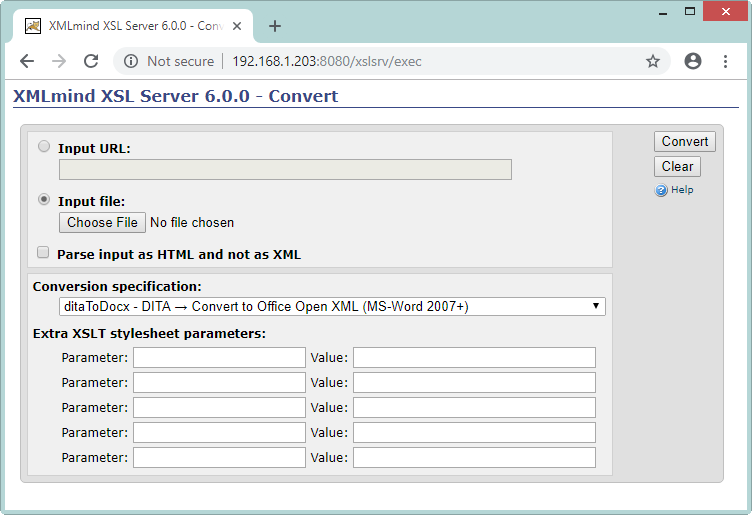

- #Xmlmind next previous links how to
- #Xmlmind next previous links pdf
- #Xmlmind next previous links install
- #Xmlmind next previous links verification
- #Xmlmind next previous links software
Use w2x-app-c.bat on Windows, but only when you need to start w2x-app with a console. Scripts used to run w2x-app, a graphical application easier to use than the w2x command-line utility. exe file is a home-made launcher parameterized by xxe.jstart, an UTF-8 encoded, plain text file. Use w2x.bat on Windows.įile w2x-app.exe is used to start w2x-app, a graphical application easier to use than the w2x command-line utility, on Windows. Scripts used to run XMLmind Word To XML ( w2x for short). 2.1 Contents of the installation directory That is, you can run the w2x command by simply executing (in a Command Prompt on windows, a terminal on Linux): XMLmind Word To XML is intended to be used directly from the w2x-1_2_2/ directory. Unzip the distribution in any directory you want.
#Xmlmind next previous links install
Manual install on any Java 1.6+ platform (Windows, Mac, Linux, etc)

Double-click on the setup.exe file to launch the installer.Moreover, if you have Java already installed on your computer, then your public Java runtime will be ignored by w2x. Therefore, you don't need to install Java on your computer. This setup.exe files includes a very recent, generally the most recent, Oracle® private Java™ runtime.
#Xmlmind next previous links verification
On Windows and on the Mac, this verification is in principle not needed as the java executable is automatically found in the $PATH when Java has been properly installed. Java HotSpot(TM) 64-Bit Server VM (build 25.112-b15, mixed mode) Java(TM) SE Runtime Environment (build 1.8.0_112-b15) On Linux, make sure that the Java bin/ directory is referenced in the $PATH and, at the same time, check that the Java runtime in the $PATH has the right version: However, w2x is officially supported by XMLmind only on Windows XP to 10, macOS 10.12 (Sierra) and 10.11 (El Capitan) and Linux.

XMLmind Word To XML ( w2x for short) requires the Oracle Java™ runtime 1.6 or above.
#Xmlmind next previous links how to
because w2x has been designed to be easily embedded in any Java, desktop or server-side, application, how to embed a w2x processor in a Java application.Also note that w2x does not require the authors to change their habits while using MS-Word: no strict writing discipline, no specific styles, no specific document templates, no specific macros, etc. Of course, deploying w2x does not require installing MS-Word on the machines hosting the software. implement open data) or because you want to port your existing documentation to a structured document format where form and content are completely separated (e.g. Generating semantic XML out of DOCX files is useful for interchange reasons (e.g. For example, numbered paragraphs are converted to proper ordered lists. In this case, most styles are converted to semantic tags. Unstyled, valid, semantic XML (DITA, DocBook, XHTML, your custom schema, etc).Clean, styled, valid XHTML+CSS, looking very much like the source DOCX files.īecause the generated XHTML+CSS file is clean and valid, you can easily restyle it, extract metadata or an abstract from it before publishing it.More precisely, XMLmind Word To XML ( w2x for short) allows to automatically convert DOCX files to:
#Xmlmind next previous links software
This 100% Java™ software component allows to automate the publishing -in its widest sense- of contents created using Microsoft® Word 2007+. XMLmind Word To XML aims no less than to suppress Microsoft® Word main drawback.
#Xmlmind next previous links pdf
However, its main drawback is that, once your document is complete, you cannot do much with it: print it, convert it to PDF or send it as is by email. Microsoft® Word is an amazing popular writing tool. 2.1 Contents of the installation directoryĖģ Alternatives to using the w2x command-line utilityĘģ.2 The “Word To XML” add-on for XMLmind XML EditorĘģ.2.1 Installing the “Word To XML” add-onęģ.3.1 Contents of the servlet software distributionęģ.3.4 Using the servlet to convert DOCX filesđ1Ĥ.1 How to generate useful multi-page HTMLđ5Ħ.1 Customizing the XHTML+CSS files generated by w2xĒ2Ħ.1.1 Using a XED script to modify the styles embedded in the XHTML+CSS fileĒ2Ħ.1.2 Appending custom styles to the styles embedded in the XHTML+CSS fileĒ2Ħ.1.3 Using an external CSS file rather than embedded CSS stylesĒ3Ħ.2 Customizing the semantic XML files generated by w2xĒ5Ħ.2.1 Converting custom character styles to semantic tagsĒ5Ħ.2.2 Converting custom paragraph styles to semantic tagsĒ6Ħ.3 Generating XML conforming to a custom schemaē1ħ.1 Variables substituted in the parameter values passed to the –p and –pu optionsē3ħ.3 Automatic conversion step parametersē4ĩ Embedding w2x in a Java™ applicationĕ4ĩ.1.2.1 Specifying an external image converterĕ6ĩ.1.2.2 Controlling how image files found in the input DOCX file are converted to standard formatsĕ7ġ0 Limitations and implementation specificitiesĕ9


 0 kommentar(er)
0 kommentar(er)
